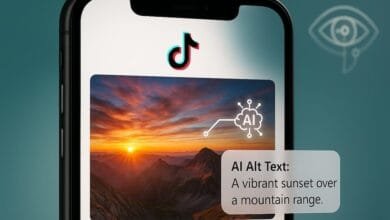
▼ Summary
– Canva introduced Visual Suite 2.0, integrating documents, presentations, whiteboards, and new spreadsheet functionalities into a single platform to streamline collaboration and project management.
– Canva Sheets and Magic Charts were launched, allowing users to create data visualizations and integrate dynamic data fields for large-scale content creation, enhancing data handling within Canva’s visual environment.
– AI features under Canva AI and Magic Studio were expanded, offering creative assistance and new capabilities like Canva Code for adding interactive elements without coding.
– A revamped Photo Editor with AI integration and over 50 community-requested features were showcased, including advanced typographical controls and expanded content libraries.
– The event highlighted partnerships with major brands and integrations with tools like AWS and LinkedIn, aiming to enhance workflows and user engagement, positioning Canva as a comprehensive productivity and content creation platform.
LOS ANGELES, CA – Canva used its Create 2025 event, broadcast from Hollywood Park, to introduce a significant expansion of its platform, signaling a move to blend productivity tools more deeply with its established creative features under the banner of “Visual Suite 2.0.” The announcements reveal a strategy focused on integrating disparate workflows, leveraging AI extensively, and introducing entirely new capabilities like spreadsheet functionalities and AI-assisted coding.
The company framed these updates as tools built for “the next generation of work,” aiming to streamline processes often handled by multiple separate applications.
The Integrated Workspace: Visual Suite 2.0
A core announcement was the introduction of Visual Suite 2.0. The central idea is allowing users to combine different Canva formats – documents, presentations, whiteboards, and the newly introduced Sheets – within a single design project. Instead of switching between tools or file types, teams can theoretically build multi-faceted projects, like an entire brand campaign from brainstorm to social assets, within one unified Canva environment. Canva posits this will simplify collaboration for various teams, from creative and sales to education.
Data Meets Design: Canva Sheets and Magic Charts
Perhaps one of the most significant additions is Canva Sheets. This isn’t just a traditional spreadsheet import; it’s presented as a “reimagined” way to work with data directly within Canva’s visual environment. Sheets are designed to integrate with Canva’s design tools and AI. Users can turn data into visualizations with a click and use AI tools like Magic Formulas and Magic Insights.
A key feature here is “Magic Studio at scale,” allowing Sheets to act as a content engine. By populating dynamic data fields (names, messages), users can reportedly generate hundreds of personalized, on-brand assets quickly, aiming to speed up large-scale content creation for campaigns or internal communications.
Complementing Sheets is Magic Charts, a tool for creating interactive data visualizations. It suggests chart formats based on the data and allows connection to external sources like Google Analytics or HubSpot for real-time updates.
AI Expanding: Creative Assistance and Coding
Artificial intelligence features, grouped under Canva AI and Magic Studio, were prominent. Canva AI is positioned as a “creative sidekick” accessible via text, voice, or media prompts to help brainstorm, generate content, or personalize designs directly within the workflow.
A potentially groundbreaking introduction is Canva Code. This feature allows users to add interactive elements like calculators, forms, or custom widgets to their Canva designs using simple prompts, without needing to write actual code or use external tools. This aims to democratize the creation of more dynamic web content and resources directly within Canva.

Refining Core Tools: Photo Editing and Community Wishes
Canva also showcased a revamped Photo Editor, integrating AI for tasks like background generation or object manipulation, making edits feel more like working with Canva templates. The goal is to keep photo editing within the Canva workflow.
Additionally, the company highlighted over 50 community-requested features being implemented. Notable mentions include finer typographical controls (kerning, ligatures), the ability to create multi-page Canva Websites, AI-powered text-to-speech for video voiceovers, and expanded content libraries through partnerships with Alamy, Afloimages, and Monotype.
Ecosystem and Engagement
The event featured high-profile speakers like Cynthia Erivo, Jon Batiste, and Anthropic’s Daniela Amodei. Brand partnerships were also evident, with AWS, Amazon Ads, Dropbox, Mailchimp, LinkedIn, and Fast Company participating, showcasing integrations aimed at streamlining workflows between Canva and other business tools. The launch of Star Wars templates further adds to Canva’s licensed content library, timed for fan engagement around May 4th.

Looking Ahead
The announcements at Canva Create 2025 clearly signal Canva’s ambition to be more than a design tool. By integrating data handling (Sheets), AI-driven coding (Code), and wrapping various document types into a single Visual Suite, Canva is making a strong play for the broader productivity and content creation market. The emphasis is on reducing friction between ideation, creation, and distribution, powered heavily by AI assistance. The success of these new tools will depend on user adoption and how effectively they integrate into complex, real-world workflows currently dominated by established players.






